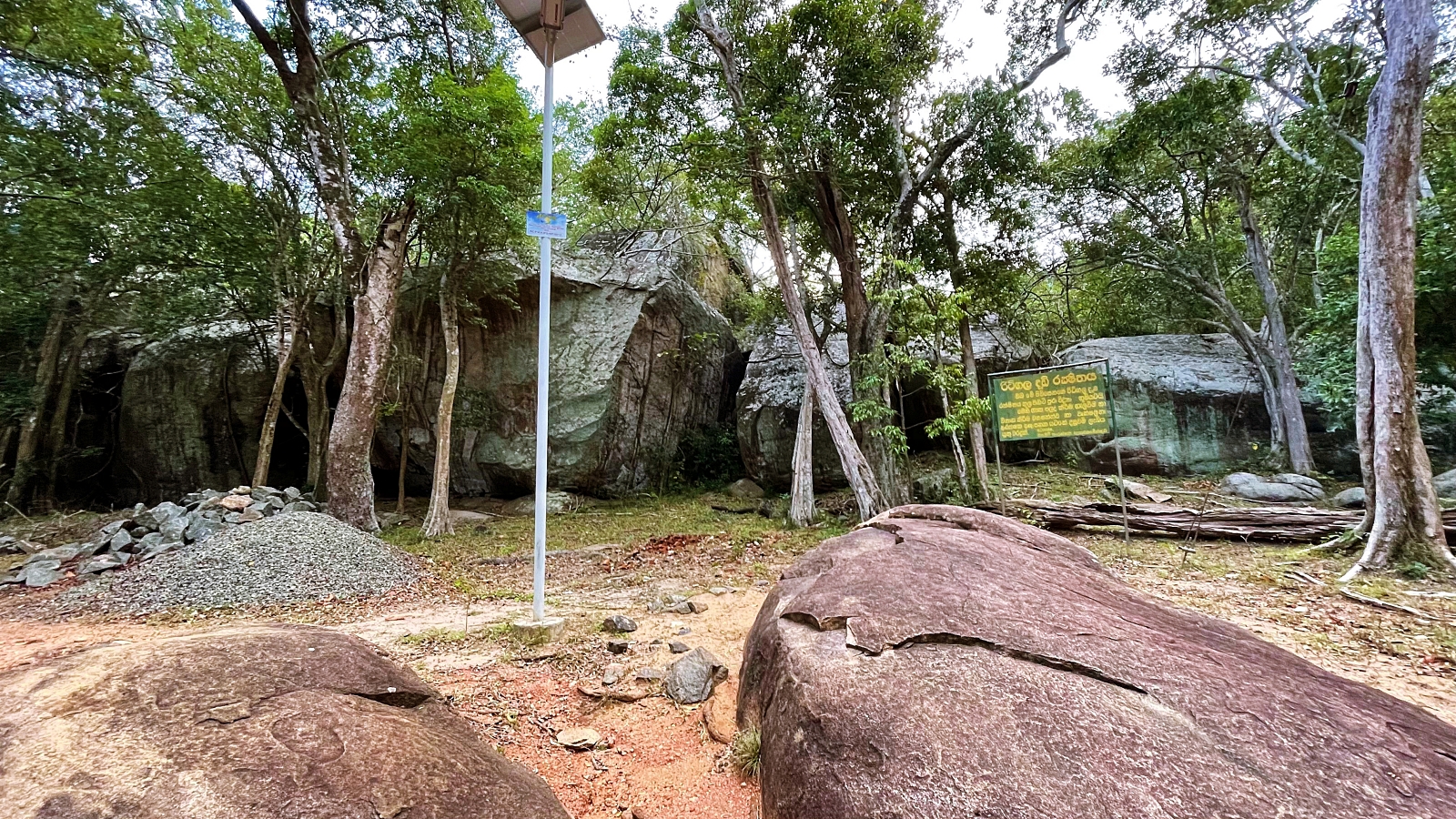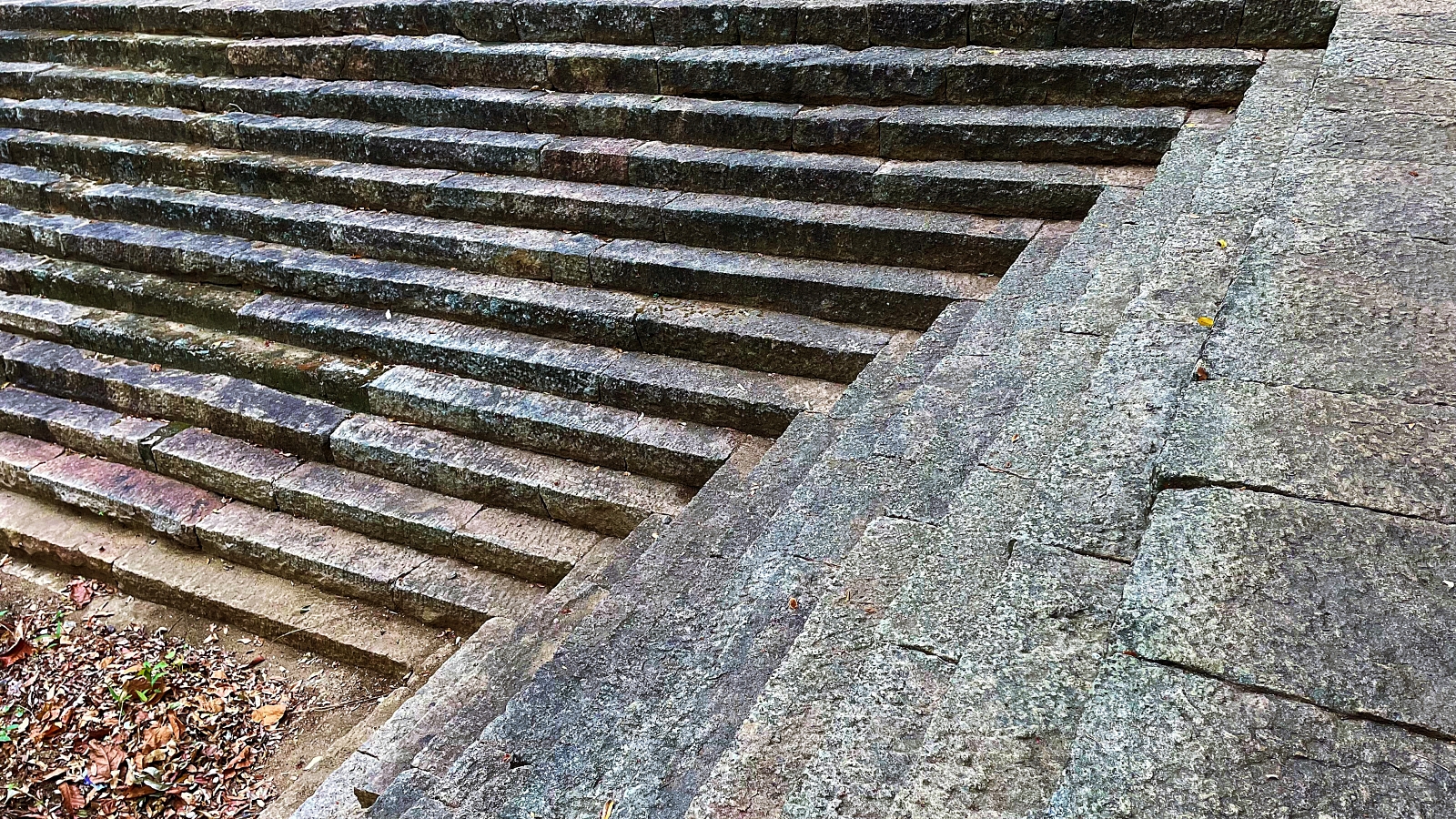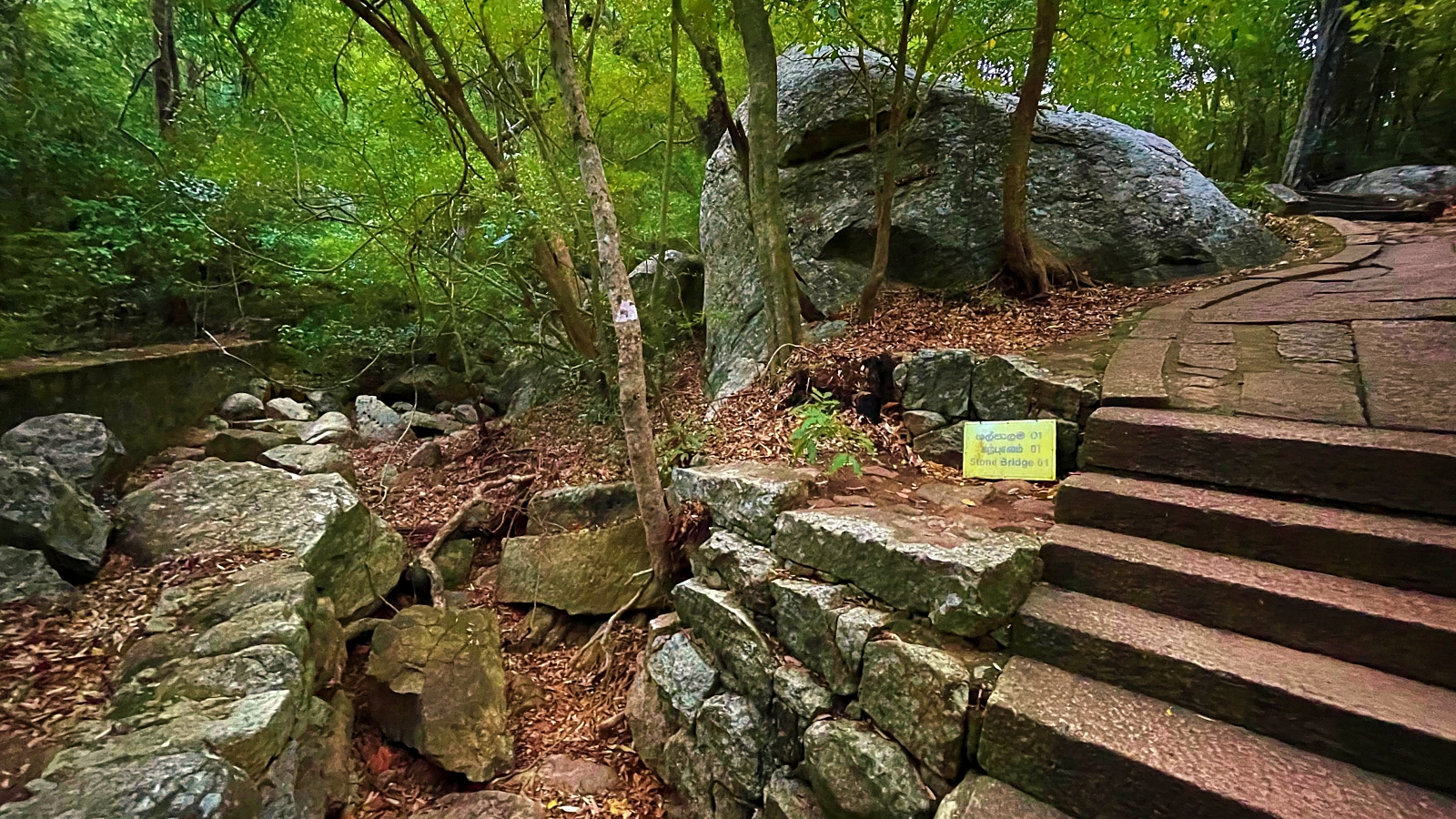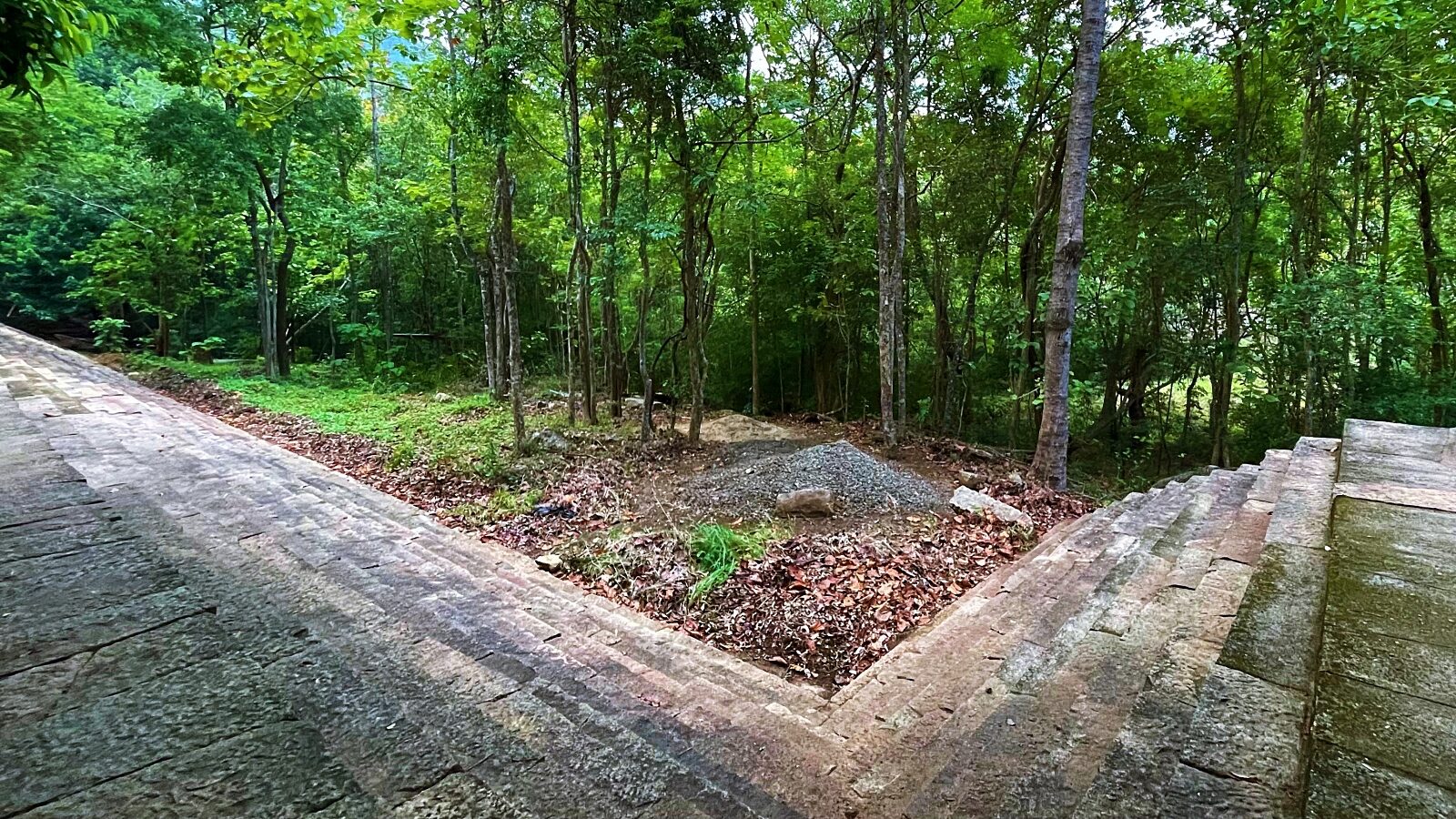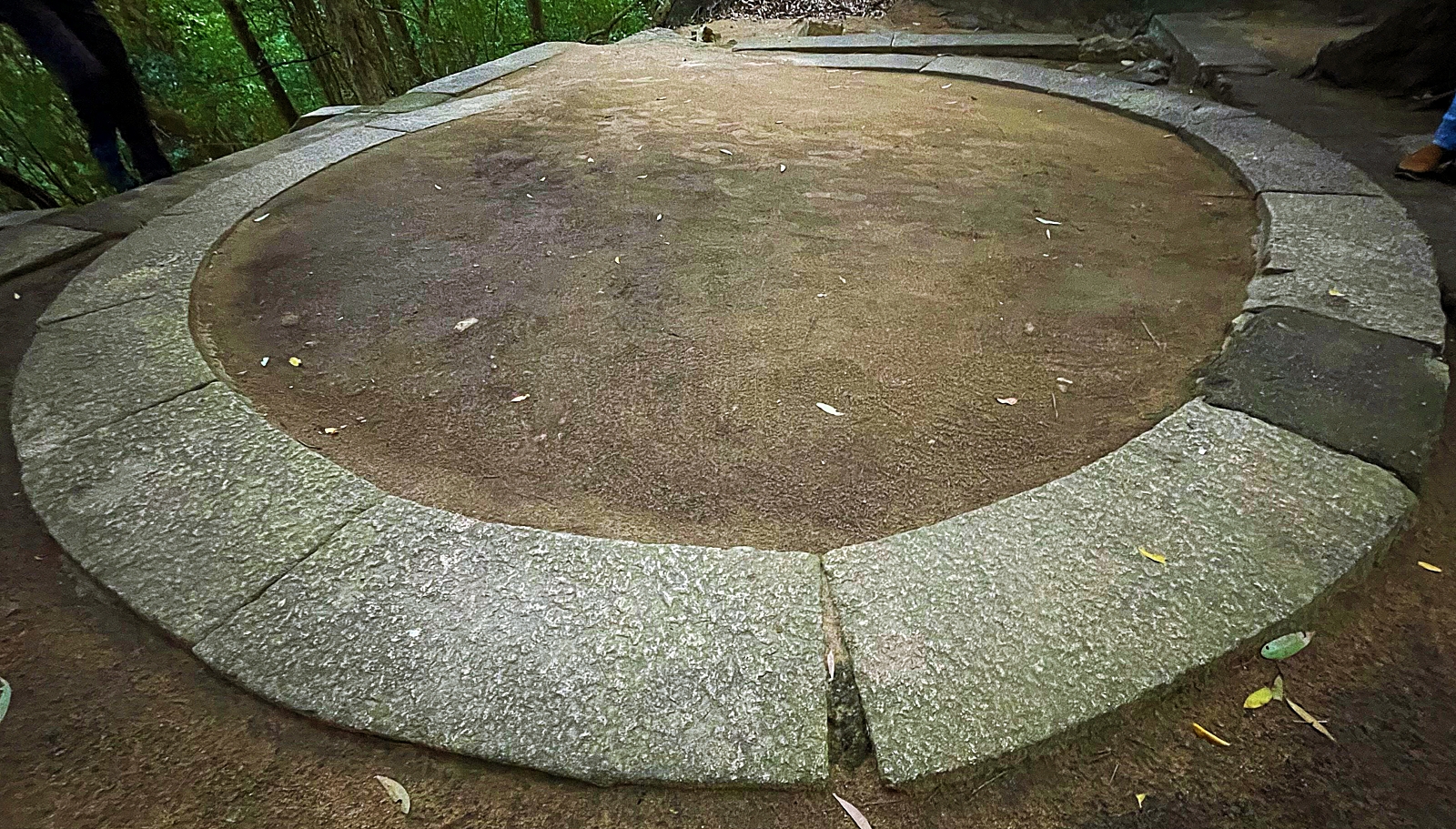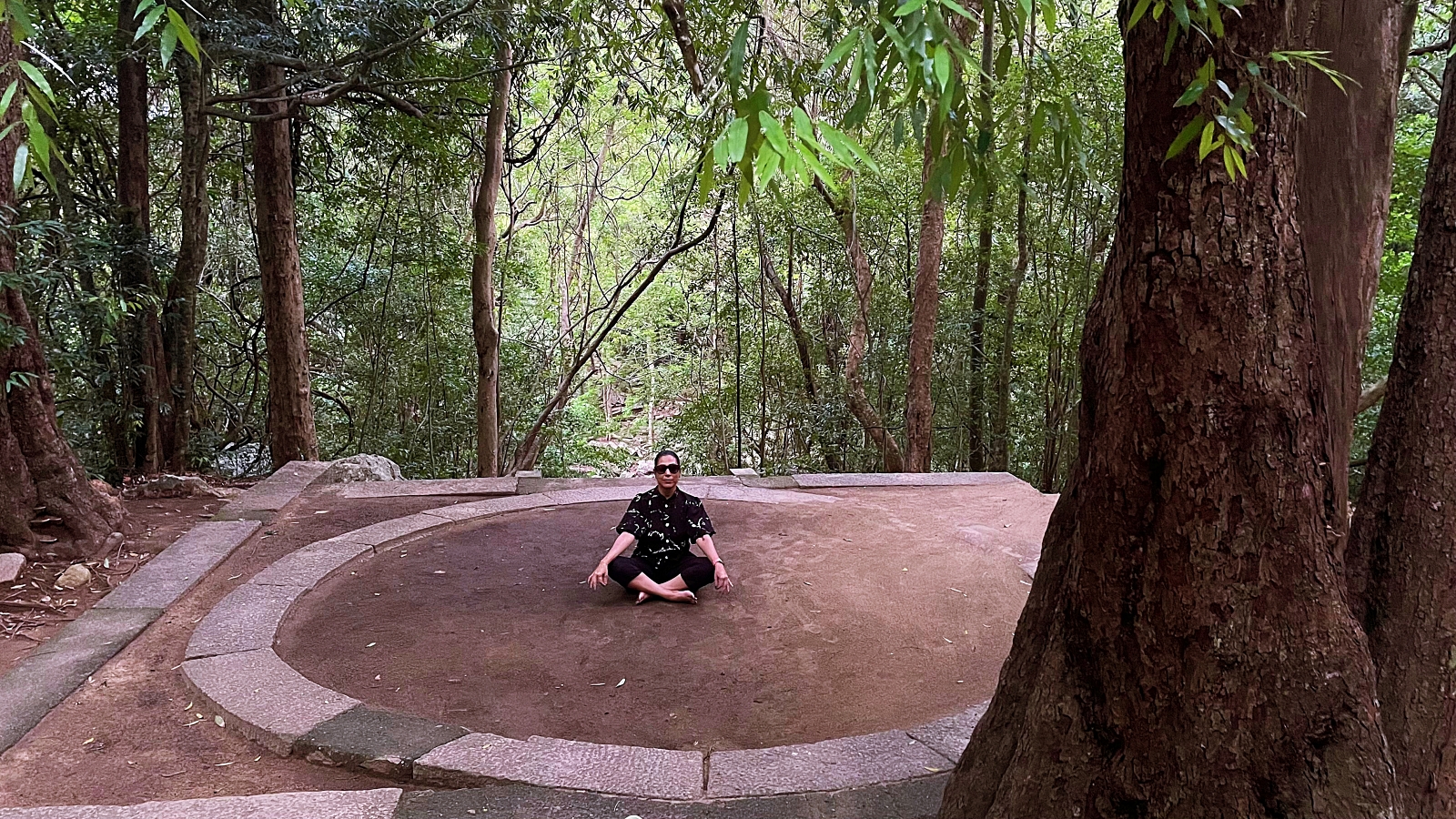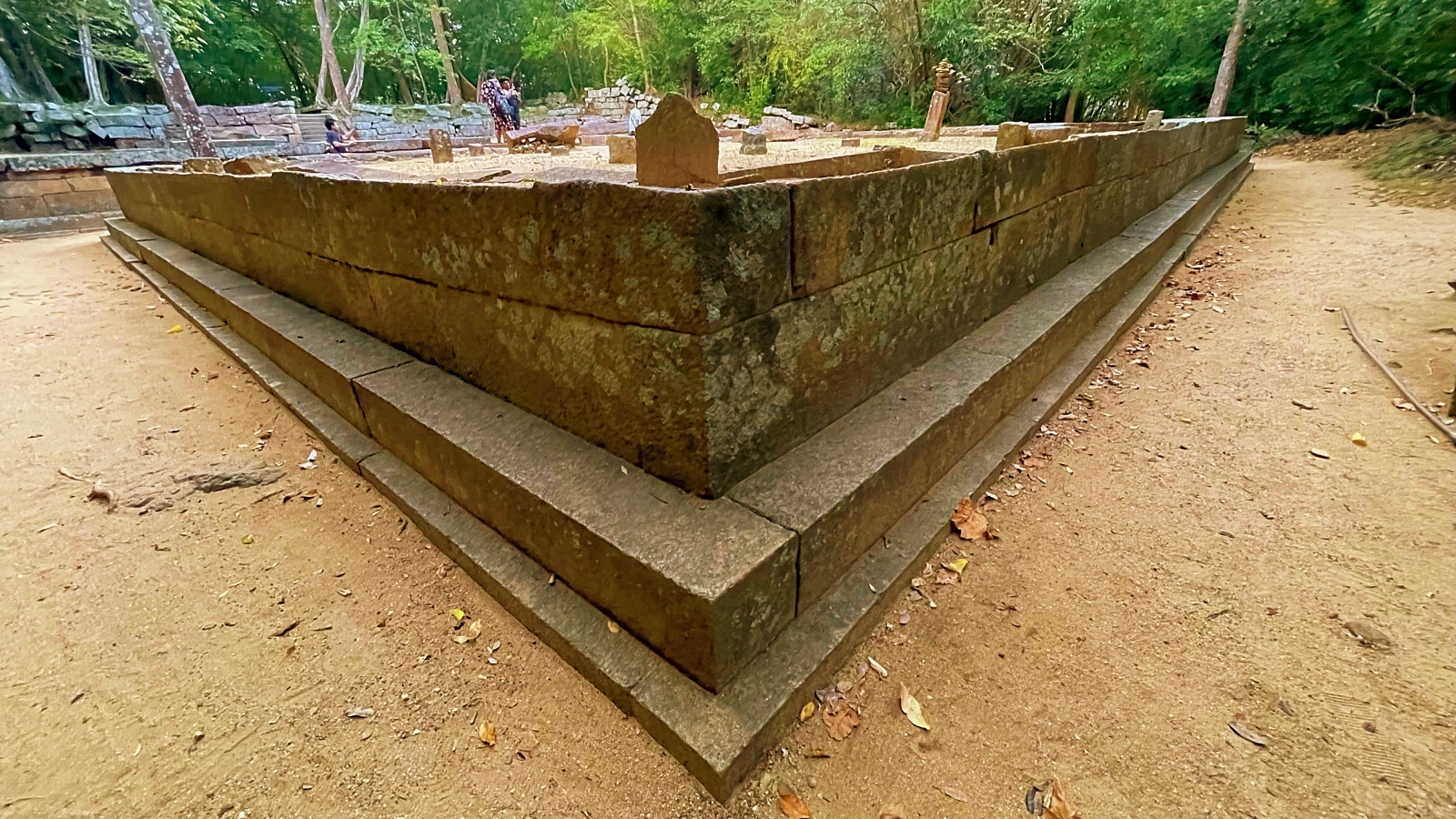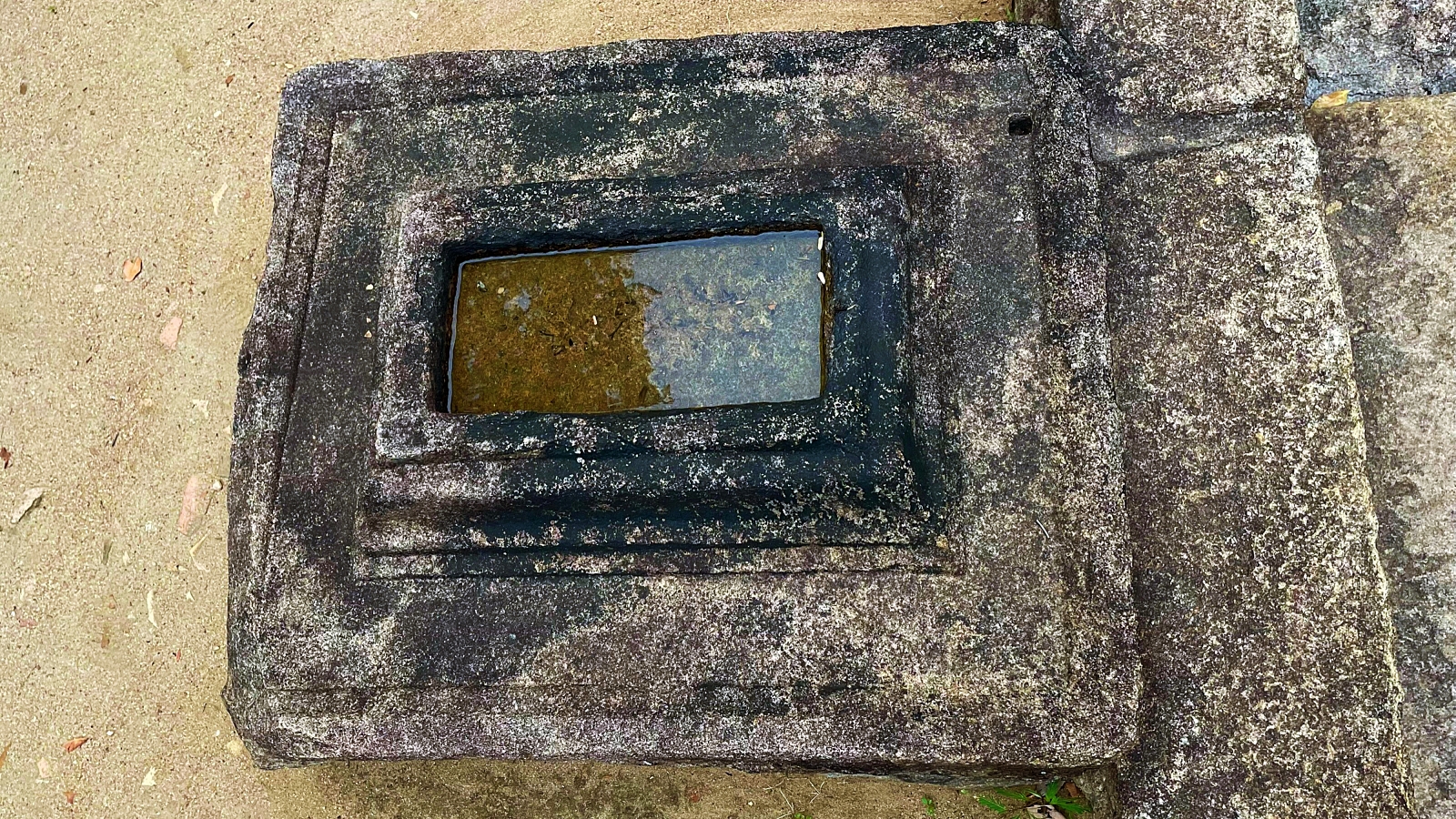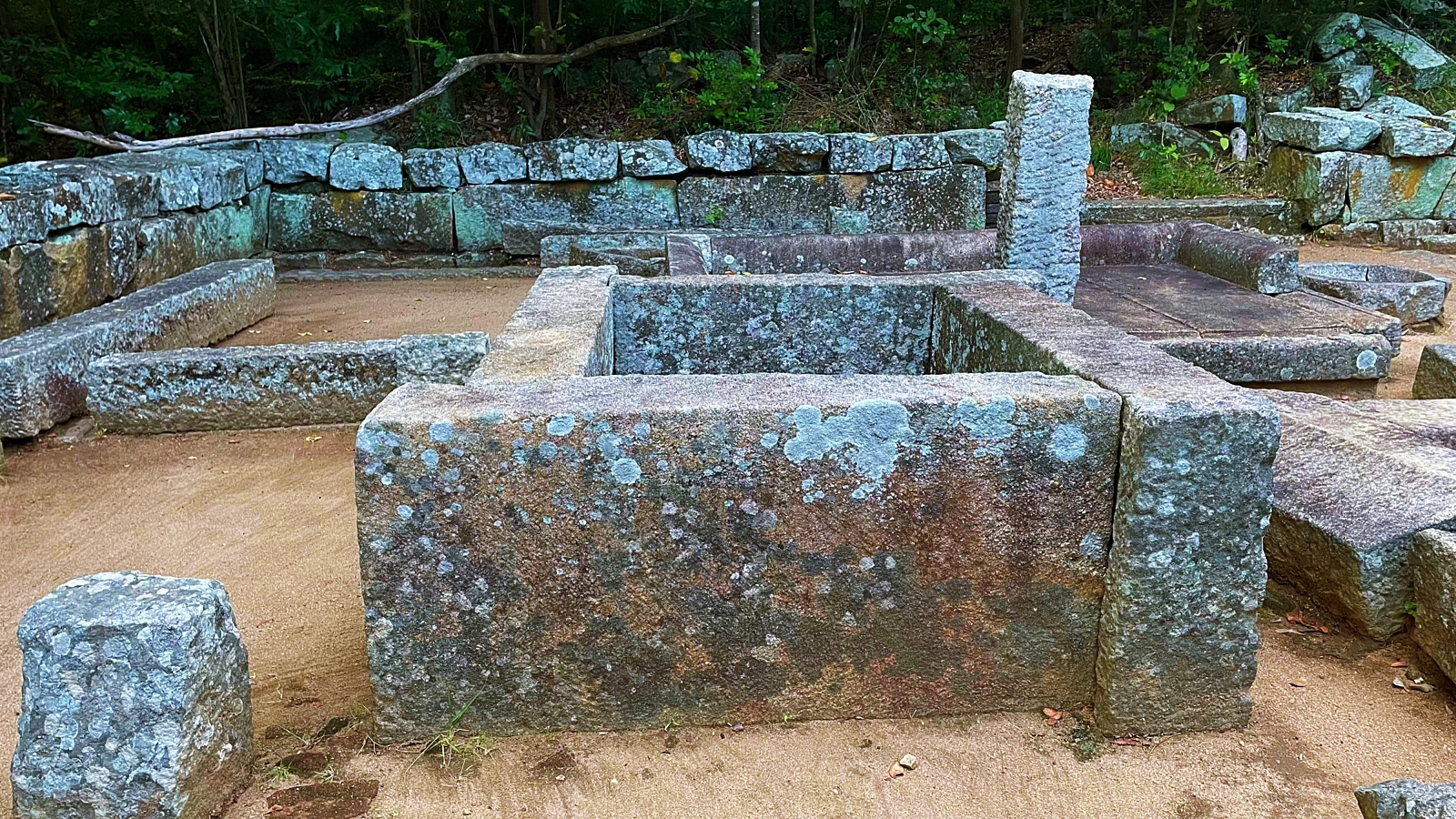Ritigala Monastery in the Sanjeevani Forest Mountain
The autumn on the plains feeds the Palugaswewa which courses through several twists and turns until arriving at Ritigala. The valley of Ritigala Wildlife Reserve is home to some exquisite Anuradhapura period prehistoric antique stone wonders. The vistas are refreshing, spanning the central province before vanishing into misty greens.
After a 30-minute jeep safari ride through the verdant Ritigala wildlife reserve near Habarana, I arrived at this rich historical site after turning right off from the rocky, steep road of Thanthirimale temple towards Dhewagiri Rajamaha Viharaya and into the winding, carpeted Palugaswewa road. On the outskirts of the Palugaswewa, the panoramic, rural settlement of Ritigala (meaning safety rock) is ruffled inside the Ritigala National Park perimeter. In the ancient Pali language, the term Arittha meant “safety,” and the Sinhala word “gala” signifies “rock,” from whence the word Riti came. Ritigala has long lived up to its name by offering protection, refuge, and shade to warriors and ascetics.
Table of Contents
Enroute Ritigala Archaeological Site
En route, I noticed that the region’s populace relies on rice farming for a living. After navigating a narrow bridge over the canal, we stopped at a sign for the Archaeological Department and parked on the side of the winding road. There was no traffic, and there wasn’t much space for many cars to pass – only a watch hut of the Department of Archaeology at the site entrance. The watch guard initially refused to let us in because our jeep had arrived at the ancient site at 4.30 pm, which was also closing time. We were permitted entry after the safari guide briefly communicated with the guard in the local language to let him know that I was a media delegate who had travelled all the way from India.

As I neared this 1st-century BC Buddhist monastery in central Sri Lanka, a sense of euphoria overtook me, especially since this archaeological site is in the district of the ancient monastic city of Anuradhapura, one of my favourite places in Sri Lanka. This archaeological site also has a well-known connection to Sanjeevani Booti from the Ramayana epic. It’s also the site where 500 monks once meditated at the same time. The wooded surroundings of this abandoned hermitage have yielded a surfeit of archaeological discoveries.
There are remains of large stone tablets and pillars dispersed all over purlieus hill, and I was chased by the stone hulks of every size and shape wherever I went.
The Rock Effigy
The rock effigy instantly took me back to the era when monks would spend hours meditating here in order to attain Nirvana. The subconscious connection was surreal. I’d say, plan your visit for a few hours. The remnants of the Ritigala forest monastery complex can be divided into two principal parts, with nicks of smaller structures away among the stones. Paths that lead from the ticket office past a cottage owned by the Archaeology Department can be used to access the enormous Banda Pokuna (artificial pond), which still fills with water during the rainy season.
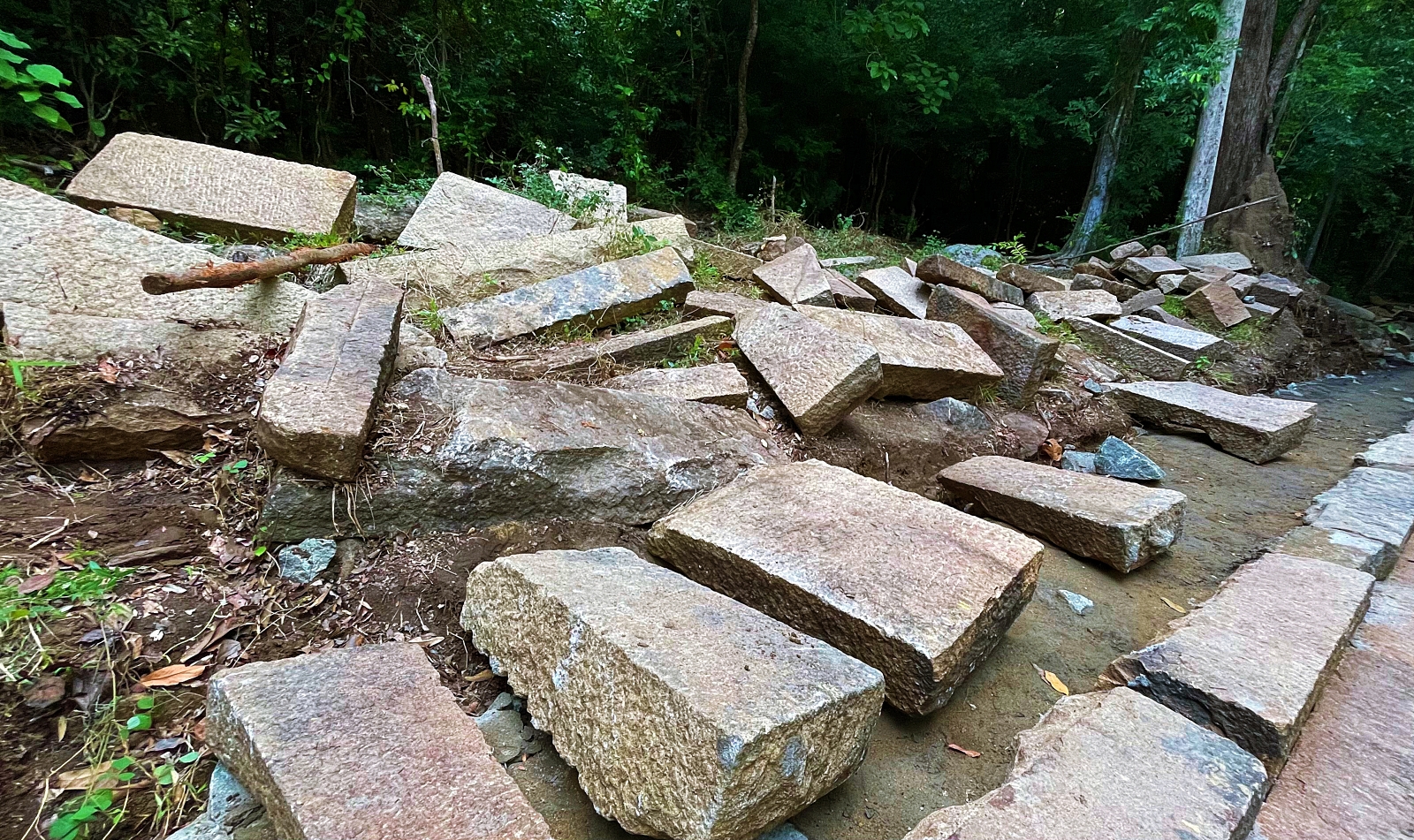
From here, you cross the inlet on a stone bridge and go through the first of three circular junctions to ascend the ceremonial staircase. The first important ruin is a massive reception building. You may get to the Janthagara (monastery bathhouse) by following the path to the right. It contains a central sunken bath rung by a roofed colonnade. There are still remnants of the grinding stones used to make the baths. Further up the flagstone staircase, there are two courses to the left at the central roundabout. The first route back takes you through half-submerged ruins before arriving at a prodigious bridge and raised library.
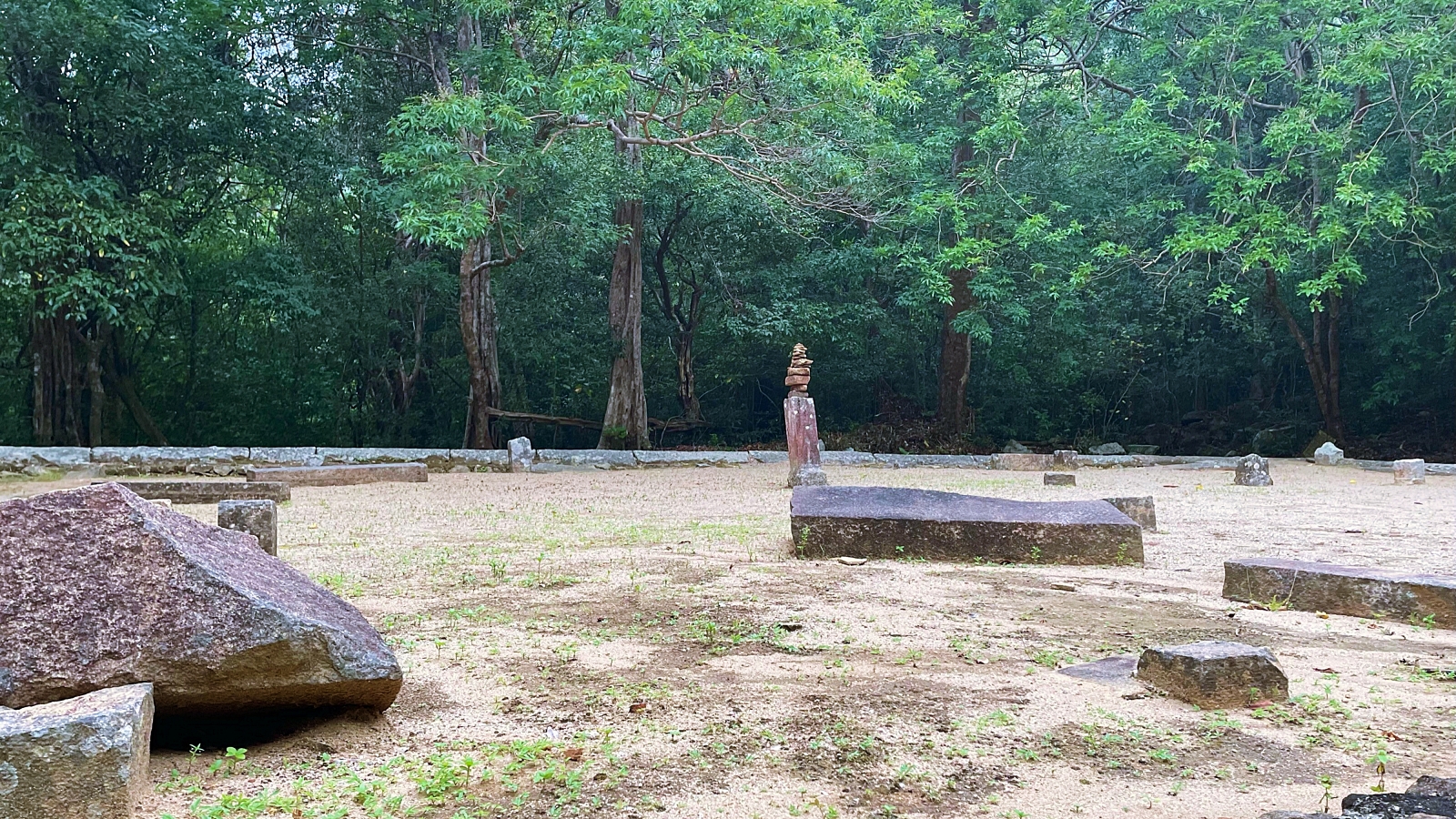
The penultimate building you encounter as you climb the main staircase is Building No. 16, a Padhanaghara (double-platformed building) set in a depression resembling a moat and used for meditation, instruction, and ritual. Padhanaghara is the same as Aranya or forest hermitage. There are plenty more buildings to explore here.
Legend of Sanjeevani Booti
The Ritigala ruins, surrounded by towering woods, were an intriguing sight! There weren’t any visitors. Except for the sudden gust of wind that decided it would like to howl through the tall trees, it was calm. But in a previous era, this was a momentous spiritual centre and a component of the historic Sanjeevani Booti legend. Now in the district of Anuradhapura, this site is remote enough for sequestration yet close enough to some connection. Both were necessary for a hermitage in the forest. It is speculated that Lord Hanuman, who travelled across Ritigala, accidentally dropped a piece of a Himalayan mountain range while transporting it from India to Lanka for its medicinal herbs.
King Ravana, who kidnapped Sita from Parnasali in India, had enraptured her on the Pusparaga (Dadumonara) on an air chariot to Ashok Vatika, a lovely park at Sita Eliya. Hanuman used Ritigala Kanda as a dock to traverse South India after discovering the place where Sita was confined. Prince Lakshmana, the brother of Lord Rama, suffered a fatal wound in battle, and the only thing that could save him was a rare herb from the Himalayas. Thus, the dry-zone flora of the lower slopes and adjacent plains at Ritigala is distinct from the pocket of greenery of healing herbs and plants at the summit.
Ritigala Monastery
Ritigala lacks the conventional symbols of Buddhist temples, such as Bo trees and stupas, except for a few shattered granite Buddha statues in a few caves. In the second century BC, the first Lanka Vihare was built close to Ritigala at the mountain base. One hundred years later, the Aritta Vihare was built. King Sena I, endowed the monastery, higher up the slope, in the 9th century AD for ascetic Buddhist monks known as the Pansukulikas – who dedicated themselves to great discipline in search of ultimate enlightenment.
According to one of the thirteen austere practises established in Buddhism, these Buddhist ascetics were so cut off from the normative life in rural temples that their robes were just cleaned, washed, and repaired rags taken from cemeteries. As I ascended higher, I came across more stone building remains on the hilltop comparable to the earlier one but significantly big. Arahats and solitaries frequented Ritigala as a retreat.
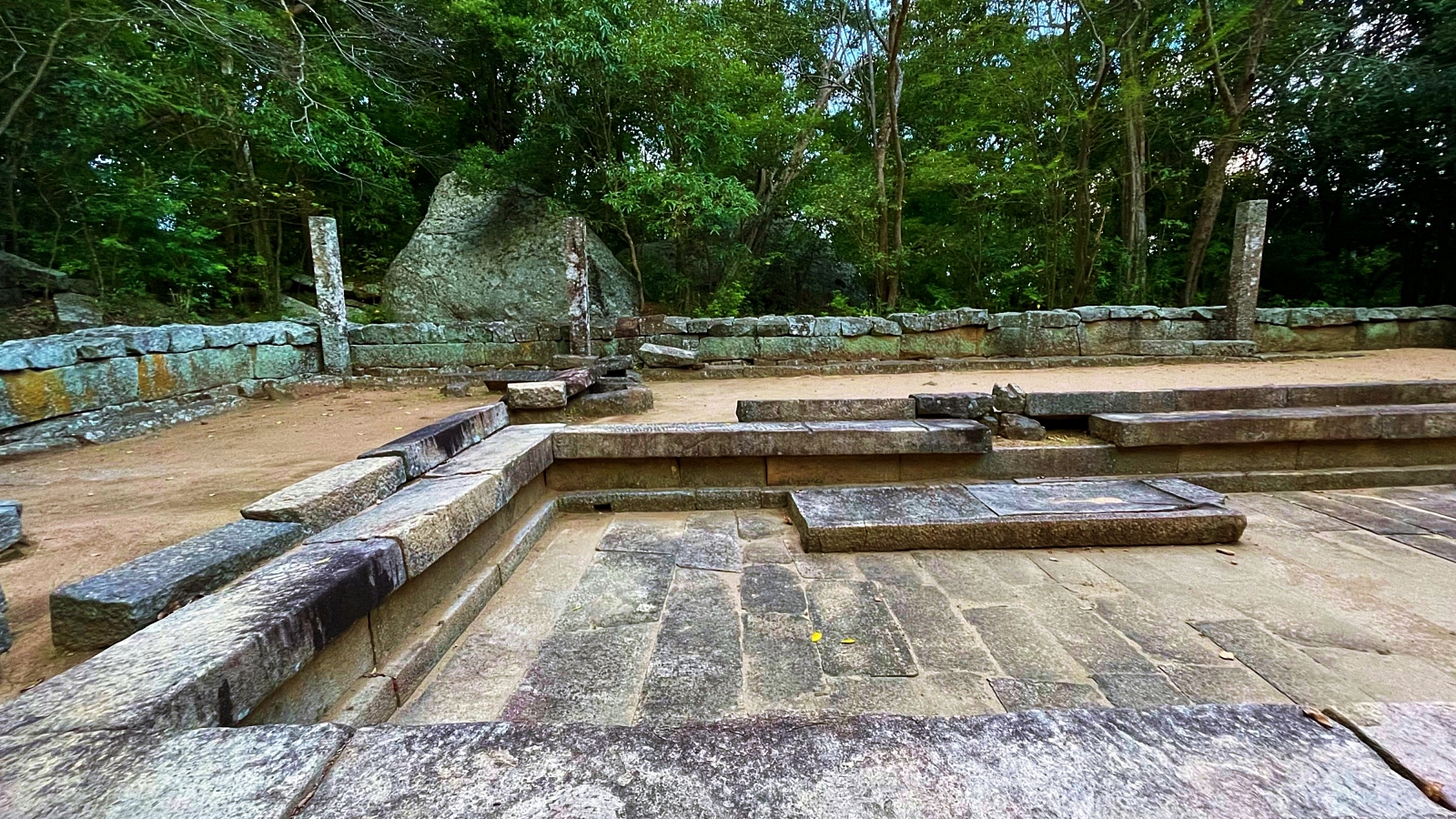
Monks who lived and meditated here for thousands of years purged the area with their chants. The austere Buddhist meditation halls, stone-faced double-platform buildings, and ambulatories are all registered in ancient inscriptions. The smaller double-platform building, with its roof supported by columns, was likely partitioned into residences for bhikkhus. Here, at the Ritigala hermitage, the Jathanagaraya pond where the bhikkhu bathed is attested to by the stone pillars, slabs, and bricks left behind.
A frontispiece, an old lavatory slab, and a broken set of stairs are among the remains. At Ritigala, decorated urinals with a urine cup, drain hole, and foot supports are the only examples of representational carving. These painted stones represent the excessive ritualistic and architectural extravagance of the orthodox monastic chapters, which the Pamsukuilikaa resisted. Another claim is that they used the act of urinating on painted urinal stones as a means of symbolic detachment.
Banda Pokuna Pond
On the eastern side of the mountain, at the base of the gorge separating the primary peak from the northern ridge of the range, rests the remains of the Ritigala monastery that take up 59 acres of space. Close to the base of the Banda Pokuna reservoir, the office of the local branch of the Department of Archeology of Sri Lanka marks the beginning of the monastery precinct. The 366-meter-long polygonal embankment that rings the ancient ‘manmade reservoir’ is a marvel of engineering, and its construction is attributed to King Pandukabhaya from 367 BC. Before entering the monastery, visitors may have had a dip in the reservoir as part of a tradition.
Keep it quiet
It’s foreknown that additional archaeological investigations will dredge up a great deal more artefacts buried at the location. Before departing, I took one last look at the complex’s central area and noticed how beautifully religion and the natural world are intertwined. An easy way to reduce anxiety is to stroll through the forest. Tall trees with three-inch-thick vines wrapped around their bark add to the forest-like atmosphere created by the rustling of the leaves in the wind.
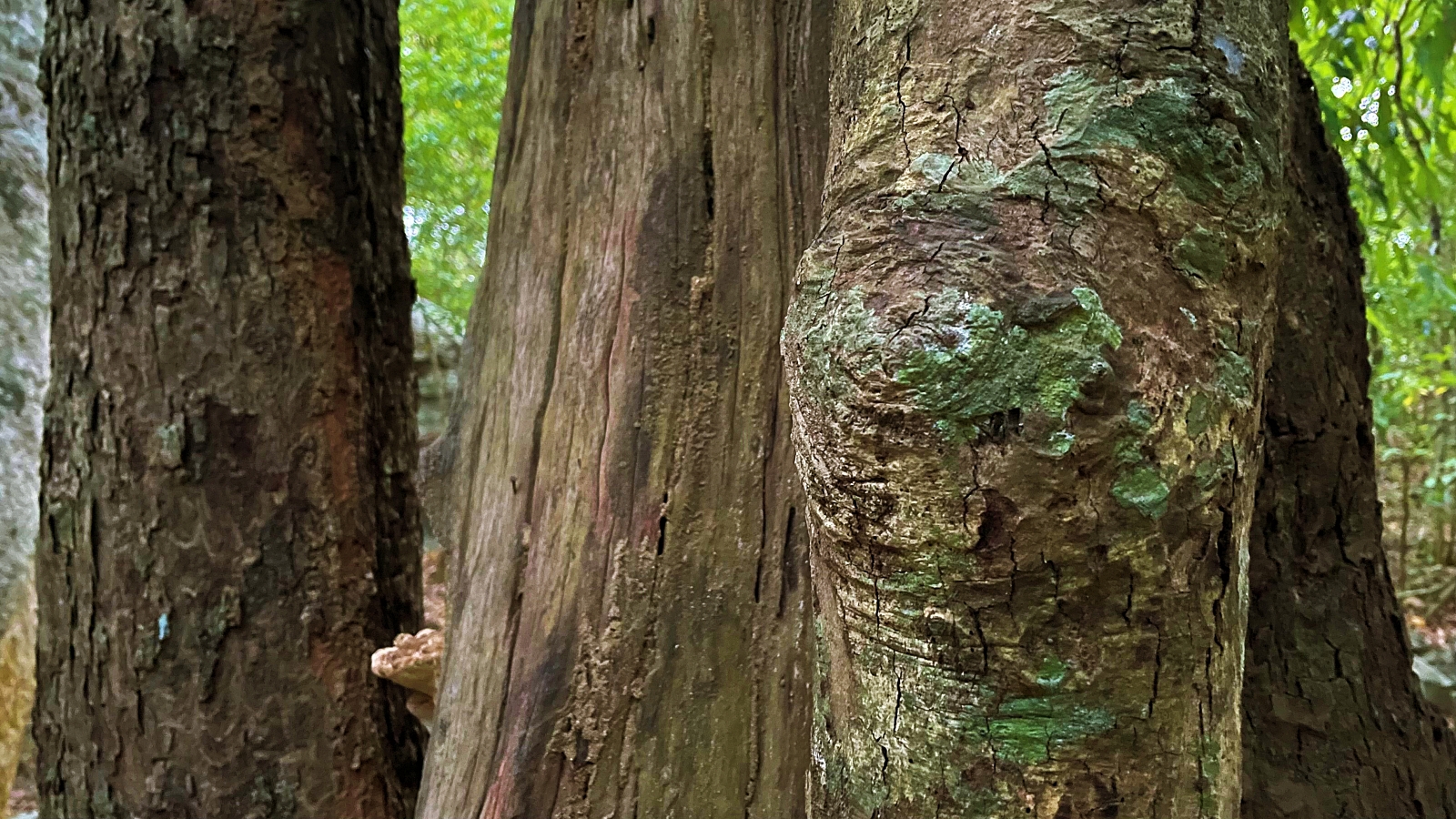
The best time to visit Ritigala is in the early morning hours before the heat of the day sets in! A new day’s invigorating sounds from nature and the crisp, cool air are tremendously energising. Enjoy the natural surroundings and fresh air, but keep it quiet.

